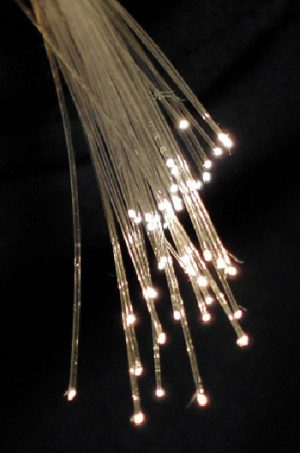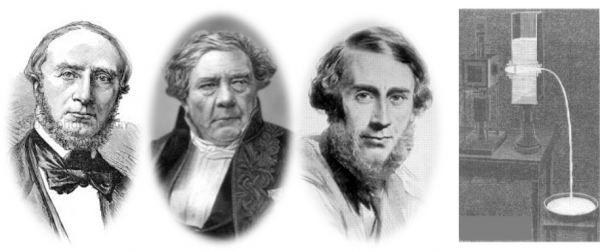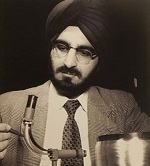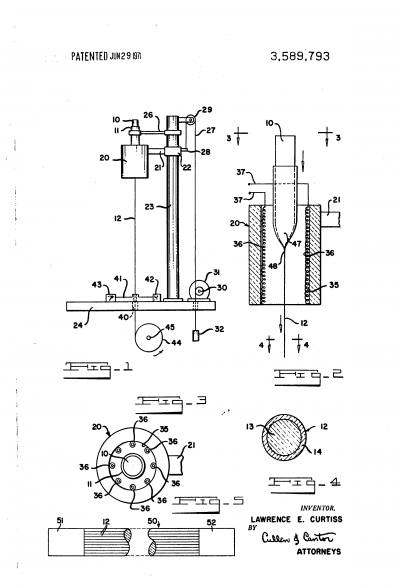
You’re probably reading this on some Internet-connected device, aren’t you? It doesn’t matter if you are using a smartphone that receives the information from an antenna, or if the data arrives to your computer, or to the electric post of your neighborhood, through copper wires or coaxial cables. At some point, your access to the web will depend on optical fibers, those transparent, glass or plastic wires, whose diameter is similar to that of human hair strands (from a few tens of microns to a few hundreds of microns).
Fiber-optic cables are large data highways that connect continents, countries, cities, and data centers to each other. Only in the sections closest to the user, the information travels through other types of routes, in slower traffic. According to data from Corning Incorporated there are more than 2 billion kilometers of optical fibers installed in the world, enough to circle the Earth by the equatorial line 50 thousand times!
If optical fibers are highways, light is the means of transport that transits through them, and the data are the passengers, which travel coded as optical signals. On these highways, the passengers can travel about 200,000 km (five laps over the Equatorial line) in 1 second.
The first fiber “usable” in communications was produced in 1970 in the United States, more precisely at Corning Glass Works (now Corning Inc.), a company specializing in vitreous and ceramic materials. But the history of the development of fiber optic begins much earlier. Let’s describe the moments we believe are the most important in this story, carried out by many scientists of different nationalities. It should be noted that there were many patent litigations and that several of the researchers involved did not recognize the work of the previous ones.
Nineteenth Century: guiding light by sinuous paths
In the nineteenth century, some renowned scientists experimentally demonstrated that light could be driven by certain means (in this case, a jet of water) forcing it to follow a certain path, including following curves. There are records of demonstrations and publications carried out in scientific societies in Europe in the 1840s and 1850s by the Swiss Jean-Daniel Colladon (1841), the Frenchman Jacques Babinet (1842) and the Irishman John Tyndall (1854). The experiment, which is illustrated in the image below, shows that light, guided by water, was diverted from its rectilinear path to make a curved path.

But was the light, following the water “path” really describing a curved trajectory? Of course not. What these scientists were showing was light reflecting again and again in the water stream, describing a kind of zigzag due to the phenomenon known as total internal reflection. This is more or less as follows. When the flow of water begins to curve, the light, which travels in a straight line, ends up reaching the interface between water and air. Then it is reflected by the inner “wall” of the water stream and hits the opposite “wall” where it is reflected back. And so it continues its zigzag path into the water. The phenomenon occurs due to differences between the way water and air interacts with light (refractive indexes). For the phenomenon to happen, it is critical that light describes a greater angle to the so-called “critical angle” when reaching the interface between water and air. Obviously, the phenomenon can happen in various media, not just in the water-air system.
The nineteenth-century experiment resembles the one that appears at the beginning of this video (except, of course, for some updates implemented in the video, such as the use of lasers). See how beautiful it is:
Flexible glass fibers to explore the digestive tract
Apparently Jaques Babinet went a little further in exploring full internal reflection and demonstrated that a curved glass rod could also guide the light.
The idea was in all probability taken up again in the 1920s, when attempts were made to use flexible glass rod bundles to conduct light and be able to see otherwise inaccessible places, such as the interior of the digestive tract (medicine). Not that there were no instruments for this, for instance endoscopes, but they were rigid and therefore feared by the patients (rightly so!).
But is glass flexible? Yes, when it’s thin, it’s very flexible.
However, these fiber ancestors were not efficient; the phenomenon of full reflection was not full at all there, the light escaped through the “walls” and the fibers did not fulfill their role of illuminating the human body.

Fortunately, in the 1960s flexible glass fibers capable of guiding light were now ready for various applications, largely due to two scientific contributions. On the one hand, Indian Narinder Singh Kapany and his doctoral advisor Harold Hopkins, working at Imperial College London (England), overcame the technological challenge of making a glass fiber bundle that delivered a quality image. The bundle, which the authors called the fibroscope, had several hundred fibers of 75 cm in length. On the other hand, the Dutchman Abraham C.S. van Heel of the Technical University of Delft (The Netherlands) successfully demonstrated the idea of coating glass fibers with lower refractive index materials to achieve full (or close to) reflection. Both papers were published in the same issue of the journal Nature (volume 173, number 4392). Published January 2, 1954, the edition can be considered a milestone in the field of optical fibers. The articles made public important developments and demonstrations, and encouraged the development of products.

One such product was the flexible gastrointestinal endoscope (gastroscope), which began to materialize when Basil Hirschowitz, a South African surgeon and a gastroenterologist in London, read the cited papers from Nature. The surgeon was currently doing a research internship at the University of Michigan (USA) and recruited an under graduate Physics student, Lawrence Curtiss. Young Larry, apparently very capable, was heavily involved in the project, enough not to give up given the difficulties he encountered in trying to reproduce the processes reported in the articles and in trying to reduce the light losses of the fibers. In 1956, Curtiss made an important contribution to the development of fiber optics: he developed the first fiber with glass core and coating. In fact, he was able to carry out his idea of coating a fiber made of a certain glass with another glass of lower refractive index. To do this, he developed a simple manufacturing method: introduce a stick of the core glass into a tube of the other glass, heat it all together and pull out a fiber from the medium. The resulting fibers were extremely thin, about 5 microns. In 1957, the patent application for this optical fiber and the process was deposited, and in 1971 it was granted.
The same year the fiber patent was deposited, Hirschowitz began testing and disseminating the fiber optic endoscope with glass core and coating. The flexible endoscope subsequently made a number of significant advances in medicine, such as minimally invasive surgeries such as laparoscopy.
However, in the 1950s, no applications were found or any attempts to apply optical fiber in the communications of the time (telephony, radio, television). However, data transmission through copper wires was not meeting the demands. In 1956, the first transatlantic telephone cable was installed, which actually worked. Nevertheless, it allowed only 36 simultaneous calls…
On the other hand, the laser had just been invented, opening possibilities for transporting information (including voice) encoded in light. This, however, required a medium that would guide the light through the desired routes.
For us, in 2018, it is obvious that this medium is the optical fiber, but fifty years ago it was discarded by many researchers. Why? Because of the strong attenuation (loss of light along the way) the fibers presented at that time. The amount could be negligible for an endoscope of less than a meter, but it was extremely significant in a cable of thousands of kilometers.
New work needed to be developed. New researchers would emerge. Who, when, where and how? We will tell you soon.
Interested? Our reading tip: Hecht, “City of light. The story of fiber optics”, Oxford University Press (1999).
